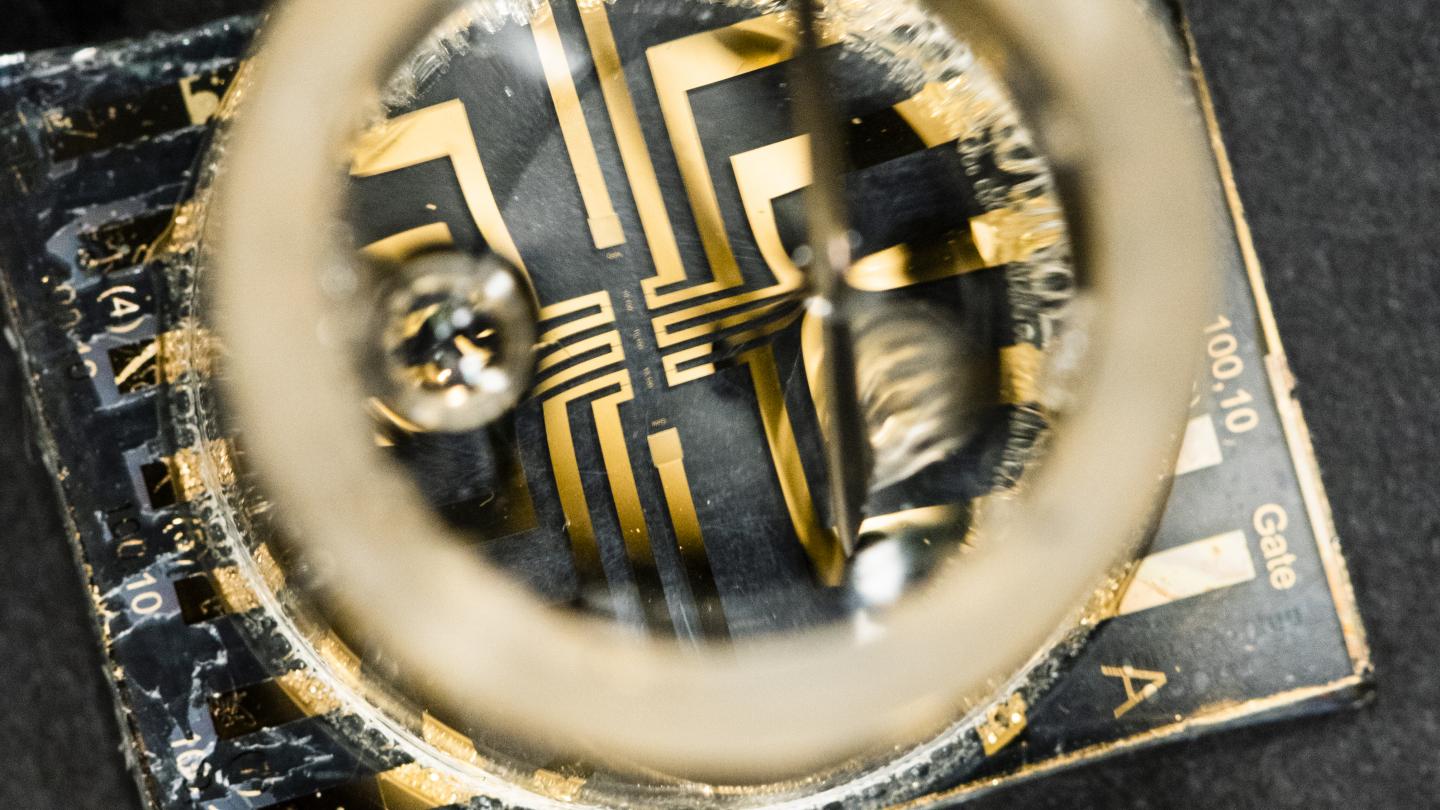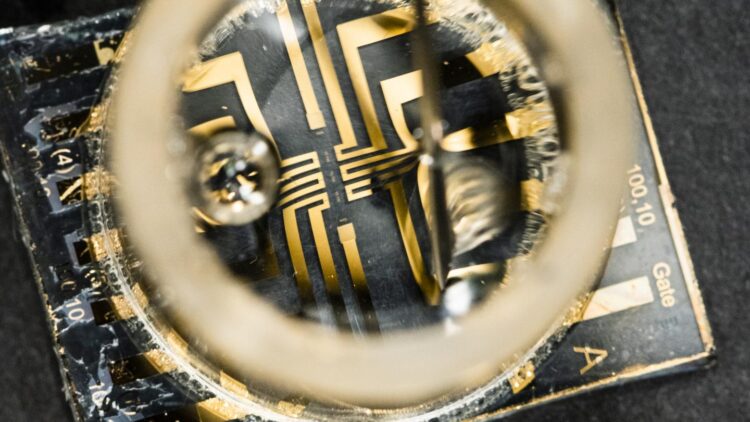Organic microbial electrochemical transistor monitoring extracellular electron transfer

Credit: Thor Balkhed
Scientists at Laboratory of Organic Electronics, Linköping University, have developed an organic electrochemical transistor that they can use to measure and study in fine detail a phenomenon known as extracellular electron transfer in which bacteria release electrons.
The study of bacteria and their significance for the natural world, and for human society and health, is a growing research field, as new bacteria are continuously being discovered. A human body contains more bacteria than human cells, and a millilitre of fresh water can hold as many as a million bacteria. Respiration in a normal human cell and in many bacteria takes place through biochemical reactions in which a compound, often glucose, reacts with oxygen to form carbon dioxide and water. During the process, energy is converted to a form that the cell can use. In oxygen-free environments, bacteria are found that metabolise organic compunds, like lactate, and instead of forming water, they release, or respire, electric charges, a by product of metabolism, into the environment. The process is known as extracellular electron transfer, or extracellular respiration.
The phenomenon is currently used in several electrochemical systems in applications such as water purification, biosensors and fuel cells. Adding bacteria is an eco-friendly way to convert chemical energy to electricity.
One such bacteria often used in research is Shewanella oneidensis, which previous research has shown to produce electrical current when fed with arsenic, arabinose (a type of sugar) or organic acids. A similar bacterium has recently been discovered in the human gastrointestinal system.
We do not, however, understand in detail what happens when bacteria release charges. In order to capture and measure the amount of charge released, electrodes are placed into the microbial systems. An individual bacterium gives a very weak signal, and thus until now, researchers have had to be satisfied with studying extracellular electron transfer in large systems with large numbers of bacteria.
In order to increase our understanding, scientists at the Laboratory of Organic Electronics at Linköping University have employed a combination of microelectronics, electrochemistry and microbiology. They have developed an organic electrochemical transistor in which they have been able to deposit Shewanella oneidensis on one of the microelectrodes, with a surface area of only a quarter of a square millimetre. The amplification of the signal that occurs in the transistor makes it possible for them to study in detail what happens when various substances are added to the system. They describe in an article in Advanced Science experiments in which they fed lactate to the bacteria.
“We have shown that we can detect very small differences in extracellular electron transfer, in other words the amount of charge released by the bacteria. Another plus is that we can achieve very short response times, and obtain a stable signal within ten minutes”, says principal research engineer Gábor Méhes, who, together with senior lecturer Eleni Stavrinidou, is corresponding author for the article.
“This is a first step towards understanding extracellular electron transfer in bacteria occupying olny a small area with the help of a transistor, and how the conversion takes place between the bacteria and the electrode”, says Gábor Méhes. “One future goal is to learn how bacteria interact with each other, and with other cells and chemical substances in the human gastrointestinal tract.”
The research is being conducted within the framework of the Biocom Lab at the Laboratory of Organic Electronics, and is financed by Vinnova, the Swedish Research Council, the Swedish Foundation for Strategic Research, the Wallenberg Wood Science center and the European Research Council, ERC.
It is hoped that the research will lead to optimising microbial electrochemical systems that harvest energy, and increase our understanding of, for example, serious gastrointestinal conditions. Looking far inte the future, the idea has been raised among reserachers of using bacteria that respire iron compounds to support human life on the oxygen-free planet Mars.
###
Organic microbial electrochemical transistor monitoring extracellular electron transfer, Gábor Méhes, Arghyamalya Roy, Xenofon Strakosas, Magnus Berggren, Eleni Stavrinidou, and Daniel T. Simon, Advanced Science 2020, doi 10.1002/advs.202000641
Contact: Gábor Méhes, [email protected], +46 11 36 34 69
Media Contact
Gábor Méhes
[email protected]
Original Source
https:/
Related Journal Article
http://dx.





